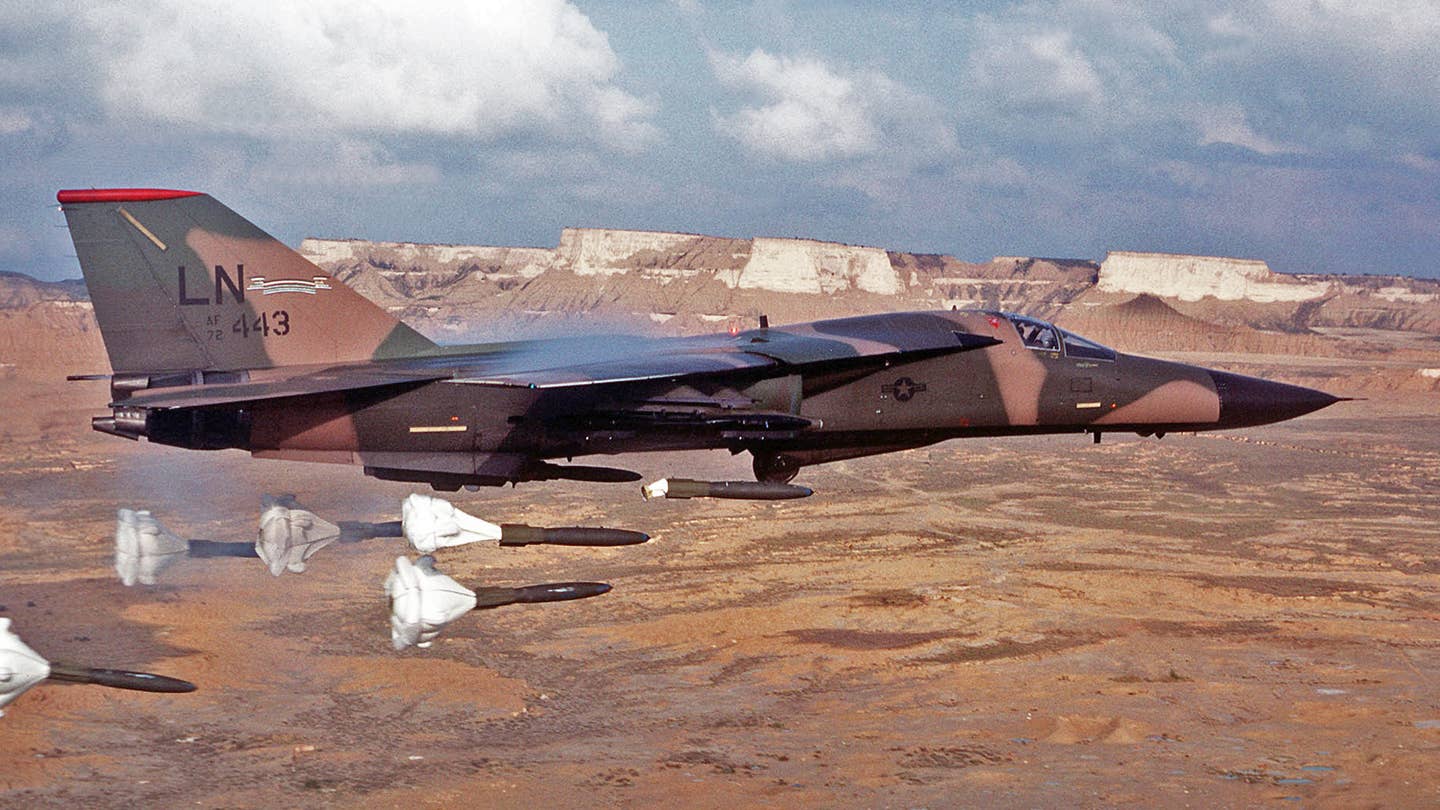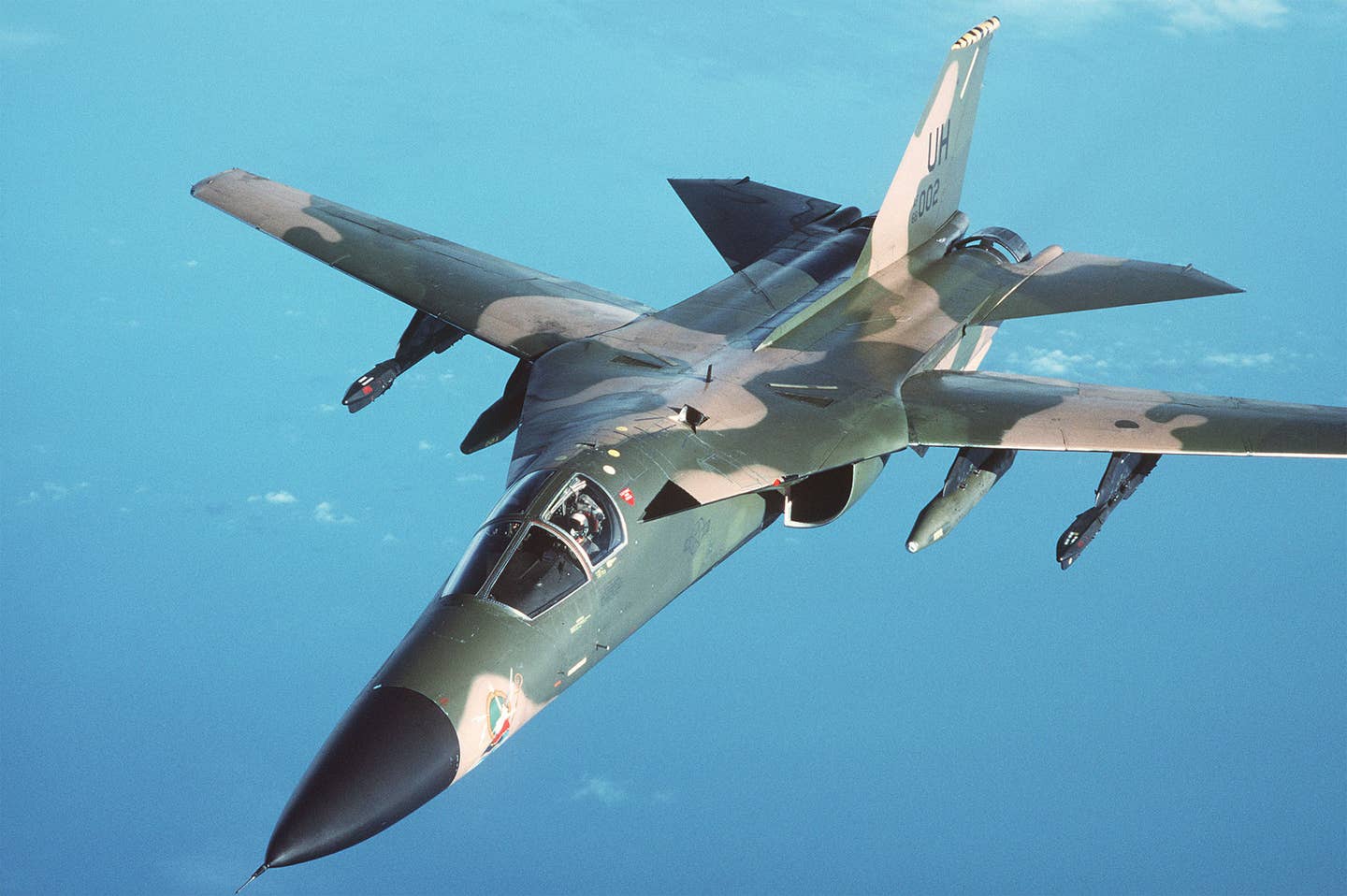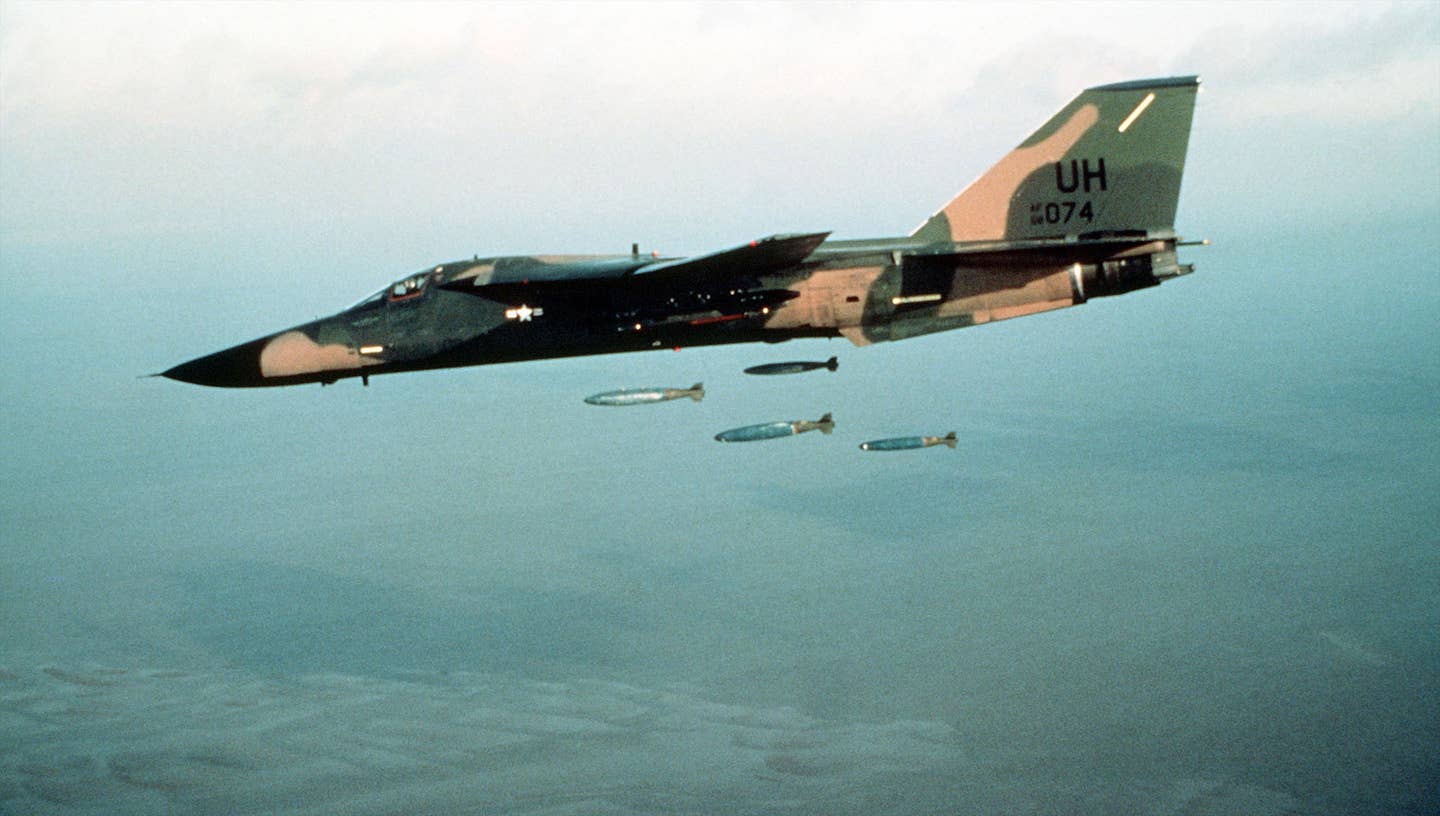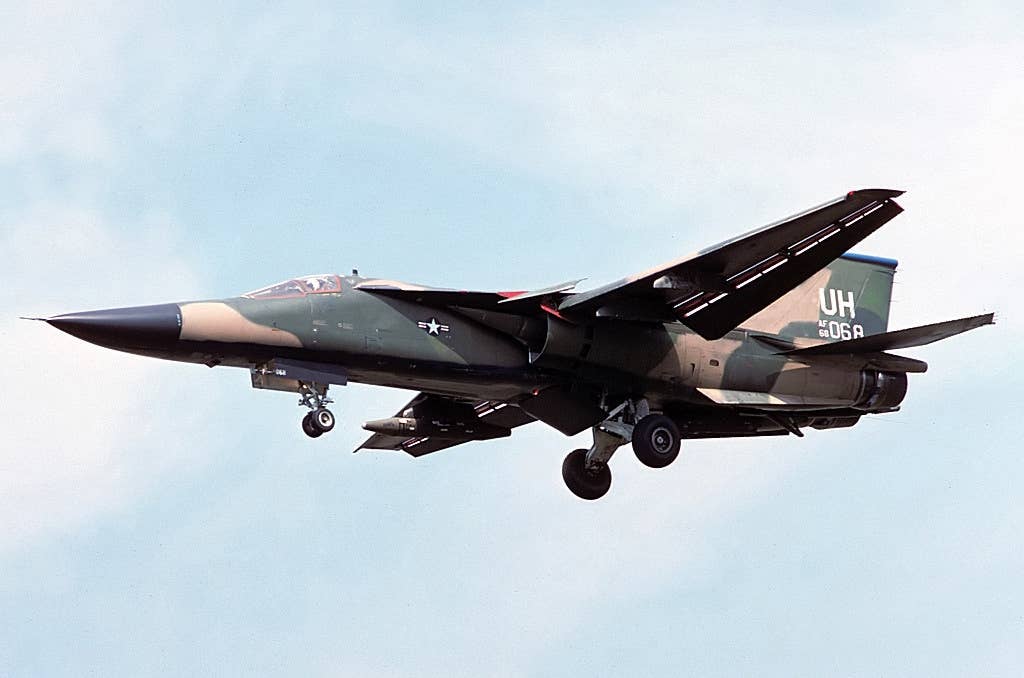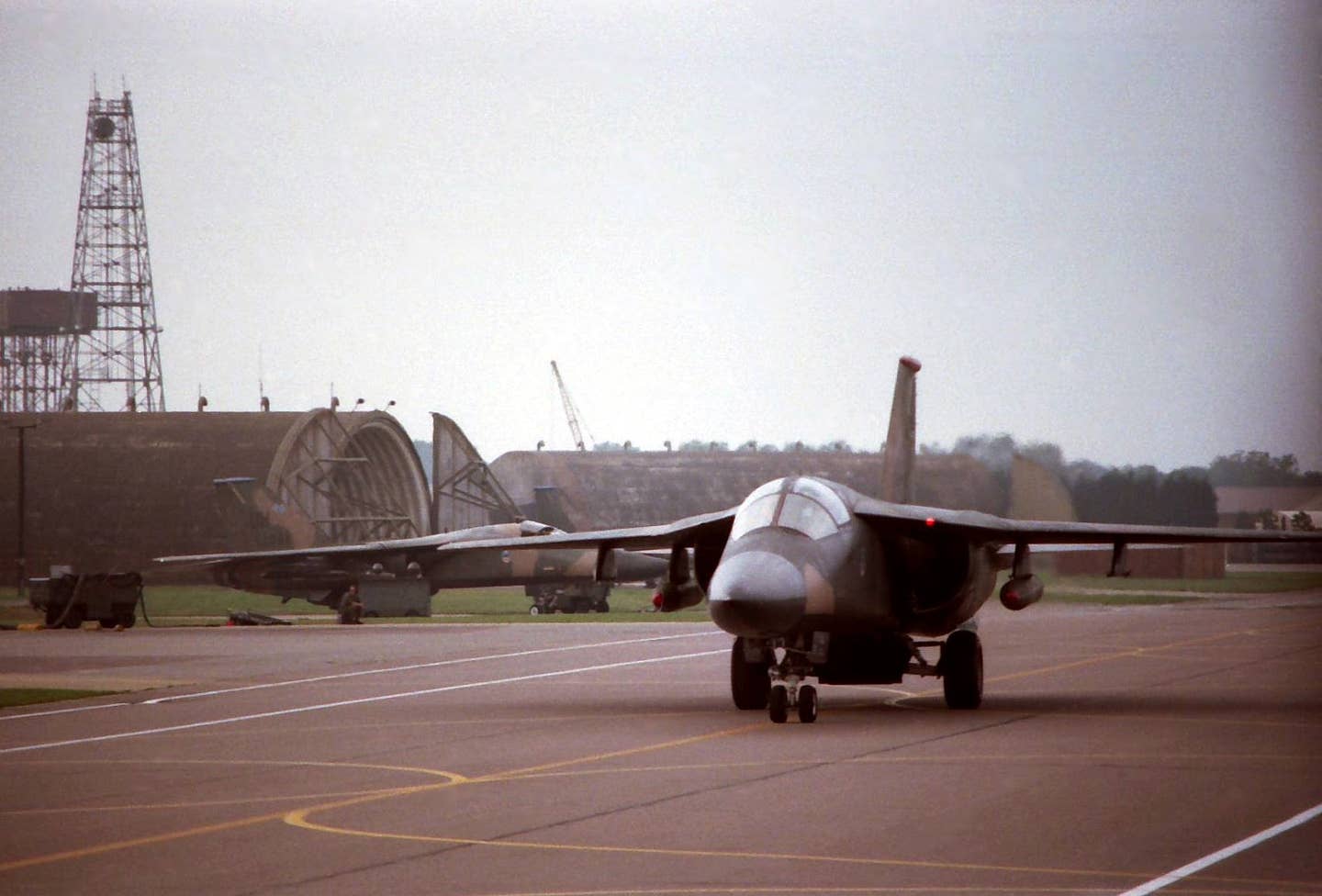The F-111 Was Faster Than You Think
The F-111 Was Faster Than You Think
The swing-wing F-111 was capable of reaching far higher speeds than most realize, and it did so on multiple occasions.
BY
THOMAS NEWDICK|PUBLISHED FEB 29, 2024 3:29 PM EST
AIRNEWS & FEATURES
U.S. Air Force
Astory that we recently
published about the true top speed of the
F-15EX Eagle II caught a good deal of attention. Most intriguingly, one U.S. Air Force veteran got in touch with
The War Zone to provide an idea of the even more impressive speed that could be attained by one of the aircraft’s predecessors — the
F-111 Aardvark.
Returning to the F-15EX for a moment, we reported about how manufacturer Boeing told us that the aircraft — the U.S. Air Force’s newest fighter — has achieved a maximum speed of Mach 2.497. This came by way of clarification after an article in
another publication had erroneously described the F-15EX as being able to reach a speed of “nearly Mach 3.”
The new F-15EX. Fast, but not
that fast.
U.S. Air Force (U.S. Air Force photo by 1st Lt Savanah Bray)
The subsequent discussion about the value of speed in modern air combat was an interesting one and prompted Jim Rotramel, a former F-111 Weapon Systems Officer (WSO), to write to
The War Zone.
Under an email entitled simply ‘How fast?’, Jim recounted a tale that he had heard from a friend, an F-111 pilot.
“I wasn’t in the cockpit, so can’t swear it’s completely true,” Jim admits. “But it sounds like similar accounts I’ve heard over the years.”
The Aardvark office. In this case, this is the cockpit of an F-111F version at the National Museum of the United States Air Force.
U.S. Air Force
First, it’s worth recounting that the F-111, first flown in prototype form back in December 1964, was primarily intended to survive
by flying fast and low. In this way, it would use its terrain-following radar to hug the ground, hopefully avoiding the worst that Warsaw Pact air defense operators had to offer, as it carried its nuclear cargo toward critical targets well behind the front lines of a potential war on Europe’s Central Front.
While fast and low-flying was the order of the day, the F-111 was, like any aircraft in its class, capable of much higher speeds in the rarefied atmosphere found at higher altitudes. This was especially the case when the aircraft was ‘clean’ — stripped of any external stores, pylons, or targeting pods.
An air-to-air view of an F-111E from RAF Upper Heyford during a refueling mission over the North Sea.
U.S. Air Force
In these conditions, the potential for very high speed was such that the F-111 was fitted with a timer that would be triggered automatically when a temperature-sensing probe on the aircraft reached around 300 degrees Fahrenheit (approximately 150 degrees Celsius). After all, the limitation on the F-111’s speed was determined by surface heating, rather than anything else.
“To give you an idea of how often it was needed, the timer was located on the back bulkhead of
the capsule, behind the WSO’s head! You can see it at the top center of the photo below — the round gauge.”
Jim Rotramel
As Jim explained in his email: “When the timer reached 300 seconds, it’s time to slow down or melt the canopy. Very few crews ever started the timer; none saw it get even close to its limit — or have seen the aircraft stop accelerating! Sustained high-speed runs were only accomplished during periodic FCFs.”
An FCF, or functional check flight is typically performed after a significant maintenance event and has the purpose of checking that all the aircraft’s critical systems function as they should.
As part of these flights, the aircraft are normally pushed to the limits of their performance, generally in a ‘clean’ configuration.
An aerial view of a portion of the NATO airpower on the Central Front in the 1980s. From left: a U.K. Royal Air Force Phantom FGR2, a USAFE F-111, a USAFE F-15C from Bitburg Air Base in Germany, and a Belgian Mirage 5.
U.S. Air Force
It’s no coincidence that one of the
F-15C pilots we spoke to had recorded their highest speed in that aircraft during an FCF: Mach 2.21, totally clean, with no pylons or stores, before running low on fuel.
Here, it’s worth noting that the maximum speed of the F-111 is often stated as Mach 2.5. But there’s an abundance of accounts suggesting it could go a lot faster than that.
For the F-111s based in the United Kingdom beginning in the late 1970s, routine programmed depot maintenance (PDM)
was undertaken at the British Aerospace (BAe) facility at Filton in Bristol, in the west of England.
Jim Rotramel recalls that, before the PDM, “several thousand pounds of classified equipment was removed” from the British-based F-111s, “making the jets a bit ‘peppier’ than normal.”
A U.K.-based 20th Tactical Fighter Wing F-111E drops inert bombs over a range.
U.S. Air Force
Once the PDM was done, an experienced crew would perform an FCF before the aircraft was returned to its home unit: one of the U.S. Air Forces in Europe (USAFE) wings at RAF Lakenheath or RAF Upper Heyford.
During the one particular FCF that Jim’s pilot friend was involved in, an error meant that a particular circuit breaker, the job of which was to restrict engine power to extend the life of the
Pratt & Whitney TF30 turbofans, was not replaced.
It seems the pilot in question first noticed something wasn’t quite right during the autopilot climb portion of the FCF, which called for a speed of Mach 1.1. At that point, the F-111 started climbing alarmingly fast. The exact words the pilot used to describe it are best not repeated here.
Passing effortlessly through 50,000 feet, the Master Caution and Total Temp warning lights illuminated, and the aforementioned countdown timer started.
An F-111E of the resident 20th Tactical Fighter Wing comes in to land at RAF Upper Heyford in May 1978.
Mike Freer/Wikimedia Commons
According to the pilot, the aircraft eventually leveled out above 60,000 feet with an indicated airspeed of
Mach 3.2.
From there, slowing down was the challenge and required very gentle coaxing of the controls and throttles. Before long, however, the F-111 had been decelerated and brought down to a more regular altitude and the warning lights went out.
Not surprisingly, the aircraft had some ill effects of its high-speed adventure.
The quality assurance team that looked over the jet after the FCF pointed out that the paint had been stripped off most of the rear end of the F-111. Thinking on his feet, the pilot suggested that it be noted as a poor-quality paint application by the BAe engineers.
An air-to-air view of an F-111 flown by the 20th Tactical Fighter Wing at RAF Upper Heyford carrying a full load of bombs on its wing pylons, circa 1983.
U.S. Air Force
According to Rotramel, this was by no means a unique event. He recalls other F-111s returning from FCFs “with windscreens bubbled, antennas melted off, the sealant covering the radome fasteners melted and streaming down the side of the jet, and paint stripped off the horizontal stabilizers.”
On one particular occasion, F-111F 70-2376, which had received flamboyant bicentennial colors when it was based at Mountain Home AFB, Idaho, came back from an FCF in 1984 with the paint around the air inlets bubbled up to reveal its previous patriotic markings.
A hot ship: F-111F 70-2376 of the 48th Tactical Fighter Wing at RAF Lakenheath in 1989.
Dick Gilbert via Flickr
As to whether the figure of Mach 3.2 is realistic, there is at least anecdotal evidence of other F-111s approaching that speed. Rotramel himself has previously
described one crew clocking Mach 2.91. A former Aardvark pilot, Jeff Guinn has
gone on record to say that the aircraft was capable of Mach 3 and has also recounted another FCF that apparently took an unwitting F-111D crew accidentally into Mexican airspace at just that speed.
With that in mind, it is fun to imagine what an updated F-111 might have been able to achieve had it been re-engined, for example with the F119 turbofans
from the F-22 — not just in terms of top speed, but what such a jet could super-cruise (flying faster than the speed of sound without afterburner) for prolonged periods of time.
So, there we have it. The F-111, an aircraft that, with USAFE at least, was replaced by the
F-15E Strike Eagle — the progenitor of the F-15EX — could fly faster than both those types, perhaps even significantly faster. While the missions flown by the F-15EX will be very different from those of the F-111, it remains a remarkable testimony to that 1960s-era engineering.

